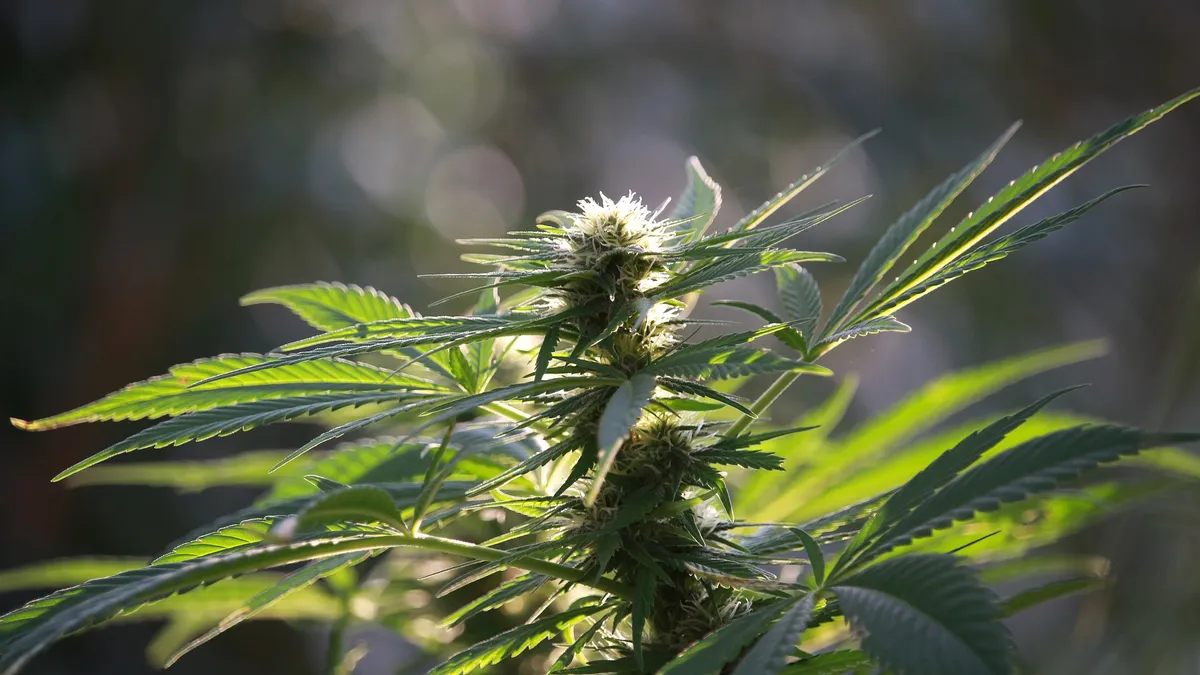The farm bill rarely makes everyone (or anyone) completely happy, but one small group of farmers is ending the year on a high note.
Hemp is now legal at the federal level, after President Trump signed the Farm Bill into law yesterday. This means hemp and its derivatives are no longer classified as a controlled substance and can legally be regulated by state and tribal governments.
The crop is genetically related to cannabis but contains far less, sometimes zero THC — the element that creates a psychoactive effect. It can be used for food and fiber, but the largest market for the crop right now is in CBD oil, a product that extracts the cannabidiol (CBD), which has anti-inflammatory properties and other purported health benefits, from the plant. The market for CBD oil is expected to reach $22 billion by 2022.
Ostensibly because of hemp’s close relation to cannabis, which remains illegal at the federal level, hemp will likely be closely regulated by each state individually.
Colton Griffin, CEO of Flourish Software, a supply chain management software company specializing in cannabis and hemp, told me that it is likely that genetics and provenance information will be required at every step within the supply chain. If states choose not to create their own regulations, the soon-to-be-developed Department of Agriculture (USDA) standards will be the default.
Some of this regulation is already begin tested through state and federal pilot programs. Even highly processed products will be required to have full traceability back to the farm level — a fascinating prospect for a crop headed for commodity status.
"Everybody expects hemp to become a commodity crop," said Griffin.
Most other agricultural products have nothing like this regulation — and nothing like this chance to get transparency right from the outset.
Traceability is a concept gaining speed within agricultural supply chains for several reasons.
The first is all over the headlines right now. When it comes to fresh food, our ability to trace a problem, like bacterial contamination, back to the farm is insufficient. Retailers are beginning to experiment with new technologies like blockchain with the understanding that when an outbreak occurs, time is of the essence. The current speed with which we are able to trace back a contamination issue does not match with current technological capability.
The second reason agricultural supply chains are chasing traceability is consumer demand. Whether it be cotton or coffee, sourcing is part of marketing now. The more consumers feel the sourcing of a product is transparent and honest, the more they trust a brand.
The problem is that for most of the food system, the largest consumer crops are nowhere near meeting this demand.
A 2017 report by the Sustainability Consortium found that large agricultural corporations’ understanding of their own supply chains is highly theoretical. Small slices of their complicated supply chains are used to approximate factors important to consumers. Sustainability metrics may include overall water use, for example.
The hemp supply chain will be different. With so much grower data and end-to-end traceability required from the start, the supply chain will have a level of transparency, virtually from day one, that few can boast today.
"That sort of traceability retirement is just going to part of the course of doing business," said Griffin.
Several supply chains within the massive global agricultural system are trying now to reverse engineer transparency to increase safety, prove ethics and invent new premium charges for provable qualities consumers prize. I’d bet some of those players are looking at hemp green with envy that this crop has a chance to get it right the first time.














